Application Letter for Teaching Position (Professional)
Dear [Hiring Manager's Name],
I am writing to express my interest in the [Subject] Teacher position at [School Name]. With [X] years of teaching experience and a passion for fostering student growth, I am confident in my ability to contribute positively to your academic team.
In my previous role at [Previous School], I successfully implemented innovative lesson plans, integrated technology into the classroom, and promoted a collaborative learning environment. My commitment to student success and dedication to professional development aligns with your school's mission to provide high-quality education.
I would welcome the opportunity to discuss how my skills and experience can benefit [School Name]. Thank you for considering my application.
Sincerely,
[Your Name]
Email for Substitute Teaching Opportunity (Casual)
Hello [Coordinator's Name],
I hope this message finds you well. I wanted to reach out to let you know I am available to cover any substitute teaching opportunities at [School Name] over the next few weeks.
I have experience teaching [Subjects/Grades], and I am comfortable adapting to different classroom environments quickly. Please let me know if there are openings where I can assist.
Thank you,
[Your Name]
Cover Letter for Education Coordinator Role (Formal)
Dear [Hiring Manager's Name],
I am writing to apply for the Education Coordinator position at [Organization Name]. My background in curriculum development and program management equips me with the skills necessary to oversee and enhance your educational initiatives effectively.
Throughout my career, I have led workshops, coordinated teacher training programs, and implemented assessment tools to ensure student engagement and learning outcomes. I am enthusiastic about bringing this experience to [Organization Name] and supporting your mission to provide exceptional educational services.
I would be grateful for the opportunity to further discuss my qualifications with you.
Best regards,
[Your Name]
Preliminary Inquiry Email for Teaching Position (Provisional)
Hello [Principal's Name],
I am reaching out to inquire if there might be upcoming teaching openings at [School Name]. I am currently exploring opportunities to apply my skills in [Subject/Grade] and would be interested in learning about potential roles.
I would appreciate any information or guidance you can provide regarding future vacancies.
Thank you for your time,
[Your Name]
Thank You Email After Interview (Heartfelt)
Dear [Interviewer's Name],
I wanted to sincerely thank you for the opportunity to interview for the [Subject] Teacher position. I enjoyed learning more about [School Name]'s programs and discussing how I can contribute to your team.
The interview reinforced my enthusiasm for this role, and I am eager to bring my experience and passion for teaching to your school community.
Thank you again for your time and consideration.
Warm regards,
[Your Name]
Resignation Letter from Teaching Position (Serious)
Dear [Principal's Name],
I am writing to formally resign from my position as [Subject] Teacher at [School Name], effective [Last Working Day].
This decision was not made lightly, as I have greatly valued the experience and relationships I have built here. I am committed to ensuring a smooth transition and will assist in handing over my responsibilities to ensure minimal disruption for students and staff.
Thank you for the support and opportunities during my tenure.
Sincerely,
[Your Name]
Request for Reference Letter (Formal)
Dear [Former Principal/Colleague's Name],
I hope you are doing well. I am reaching out to kindly request a reference letter for my application to [School/Organization Name] as a [Subject] Teacher.
Your insight into my teaching abilities and contributions would be invaluable, and I would greatly appreciate your support in this matter. Please let me know if you need any additional information to complete the reference.
Thank you very much for considering my request.
Best regards,
[Your Name]
Letter for Applying to Educational Workshop (Informal)
Hi [Coordinator's Name],
I am interested in attending the upcoming workshop on [Workshop Topic] at [Organization/School]. As an educator in [Subject/Grade], I believe participating in this workshop will help me enhance my teaching methods and provide better learning experiences for my students.
I would appreciate your guidance on the registration process and any prerequisites needed.
Thanks in advance,
[Your Name]
What is a Cover Letter for Teaching and Education Jobs and Why You Need It
A cover letter for teaching or education jobs is a personalized document that accompanies your CV or resume. Its purpose is to:
- Introduce yourself to the school or institution.
- Highlight your relevant teaching experience, qualifications, and skills.
- Demonstrate your understanding of the institution’s mission and values.
- Persuade the hiring manager that you are a strong candidate for the position. This letter can significantly increase your chances of being shortlisted for an interview.
Who Should Send a Teaching Cover Letter
- Recent graduates seeking their first teaching position.
- Experienced teachers applying for a new school or position.
- Substitute or part-time teachers exploring available opportunities.
- Education coordinators, program managers, or workshop applicants in the educational sector. Essentially, anyone looking to communicate professional interest and qualifications for a role in education.
Whom the Cover Letter Should Be Addressed To
- Hiring managers or school principals.
- HR or recruitment officers at educational institutions.
- Workshop coordinators or program directors for training sessions.
- Supervisors or former colleagues when requesting references. Always try to identify the correct recipient to personalize your letter effectively.
When to Send a Teaching Cover Letter
- Applying for a full-time, part-time, or substitute teaching position.
- Responding to a job advertisement or an open position inquiry.
- Requesting a reference or recommendation.
- Registering for professional development workshops.
- Following up after an interview. Timeliness increases the effectiveness of your letter.
How to Write and Send a Teaching Cover Letter
- Research the school or organization to tailor your letter.
- Start with a clear and professional greeting.
- Highlight your experience, skills, and achievements relevant to the role.
- Express enthusiasm for the position and alignment with the institution’s values.
- Keep the letter concise, usually one page.
- Proofread for grammar, tone, and clarity.
- Send via email or post according to the application instructions.
How Many Cover Letters Should You Prepare
- One unique cover letter per job application is ideal.
- You may maintain templates for different types of roles (e.g., classroom teacher, coordinator, substitute teacher).
- Tailor each letter to the specific school, subject, and grade level to maximize impact.
Formatting Tips for Teaching Cover Letters
- Length: 1 page maximum.
- Tone: Professional, but can vary (formal, heartfelt, casual) depending on context.
- Structure: Introduction, body (experience and skills), closing statement.
- Wording: Clear, concise, and positive.
- Sending mode: Email for digital applications, letter for physical submissions.
- Etiquette: Address recipient correctly, use proper salutations, and include contact information.
Requirements and Prerequisites Before Writing
- Updated resume or CV.
- Knowledge of the school or organization’s mission and programs.
- Details of relevant teaching experience, certifications, and achievements.
- Understanding of the job description or workshop requirements.
- Optional: References or letters of recommendation ready if requested.
After Sending the Letter / Follow-up
- Confirm receipt if possible.
- Send a polite follow-up email after 7–14 days if no response is received.
- Prepare for potential interviews or further communication.
- Keep track of all applications sent for reference.
Pros and Cons of Sending a Teaching Cover Letter
Pros:
- Demonstrates professionalism and initiative.
- Highlights qualifications and achievements beyond the resume.
- Personalizes your application and shows interest in the institution. Cons:
- Requires additional time and effort.
- Risk of errors if not carefully proofread.
- May be ignored if the institution relies solely on resumes or online forms.
Common Mistakes in Teaching Cover Letters
- Generic letters that are not tailored to the institution.
- Overly long or repetitive content.
- Typos, grammatical errors, or informal language in a formal application.
- Failing to highlight relevant teaching experience or achievements.
- Neglecting to include contact information or proper salutations.
Elements and Structure of a Teaching Cover Letter
- Greeting/Salutation: Address the correct person.
- Introduction: State the purpose of your letter.
- Body: Highlight teaching experience, skills, achievements, and alignment with the institution.
- Closing: Express enthusiasm and willingness to discuss further.
- Attachments: Resume, certificates, or reference letters if required.
- Signature: Name and contact information.
Tricks and Tips for Strong Teaching Cover Letters
- Research and mention specific programs or initiatives at the school.
- Quantify achievements (e.g., improved student performance by X%).
- Keep a master template but personalize for each application.
- Use a confident but humble tone.
- Include a call-to-action, inviting discussion or interview.
Compare and Contrast With Similar Letters
- Teaching Cover Letter vs. Resume: Resume lists qualifications, cover letter explains relevance and motivation.
- Email vs. Printed Letter: Emails are faster and suitable for digital applications; letters are more formal and traditional.
- Cover Letter vs. Inquiry Email: Inquiry emails are more casual, seeking information about openings, while cover letters formally apply for a position.
- Reference Request vs. Application Letter: Requests seek support, while applications promote your own candidacy.
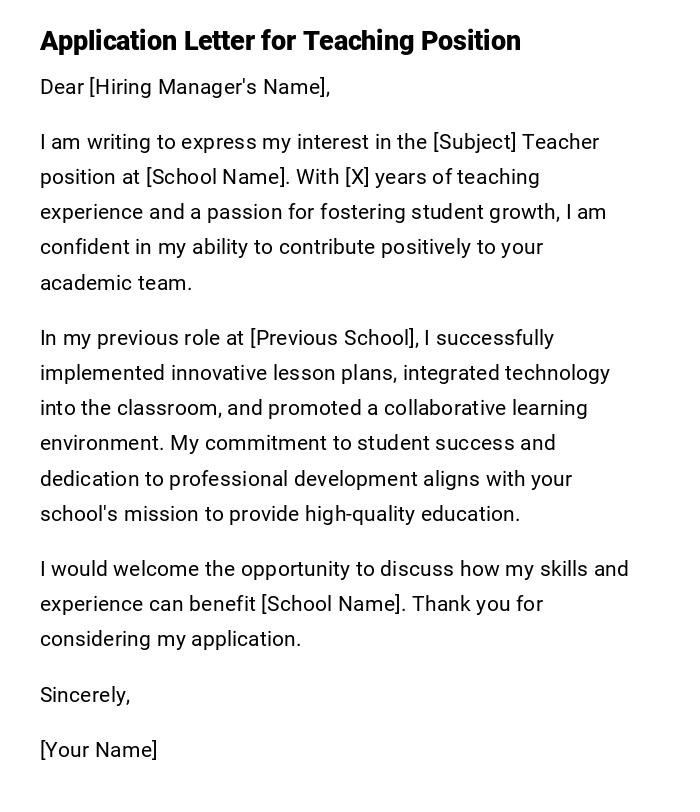
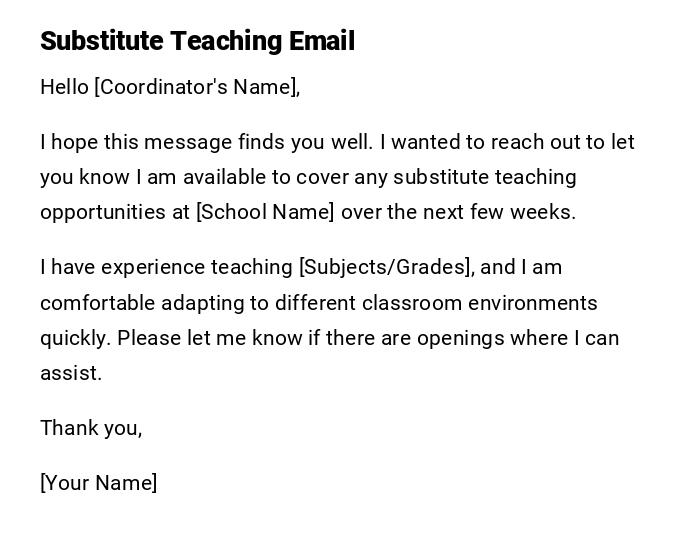
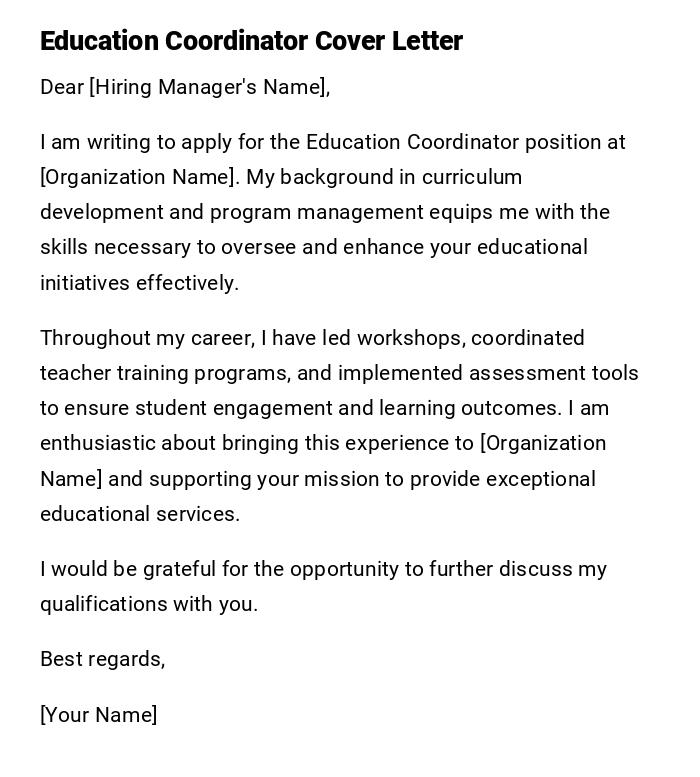
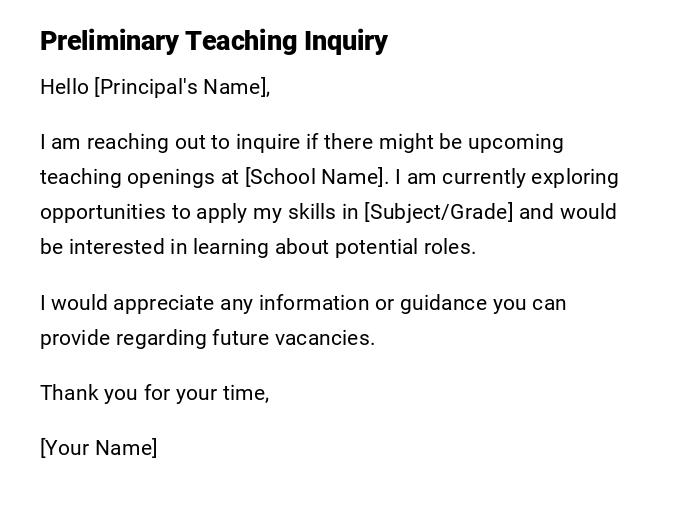
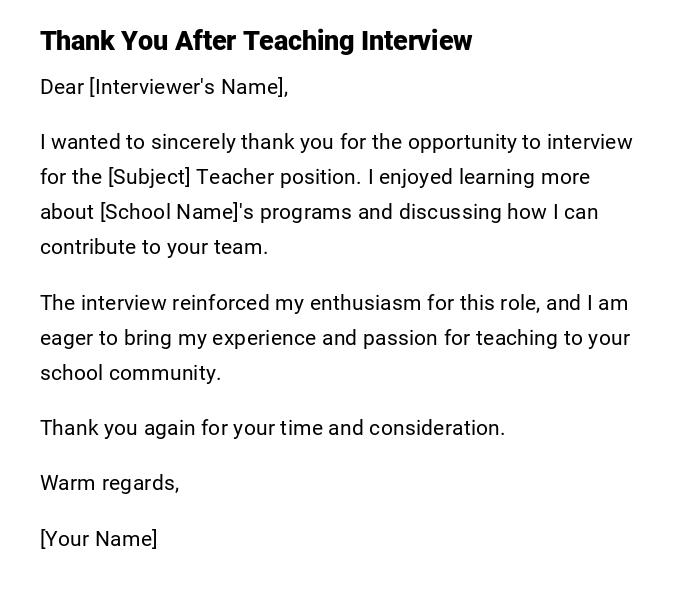
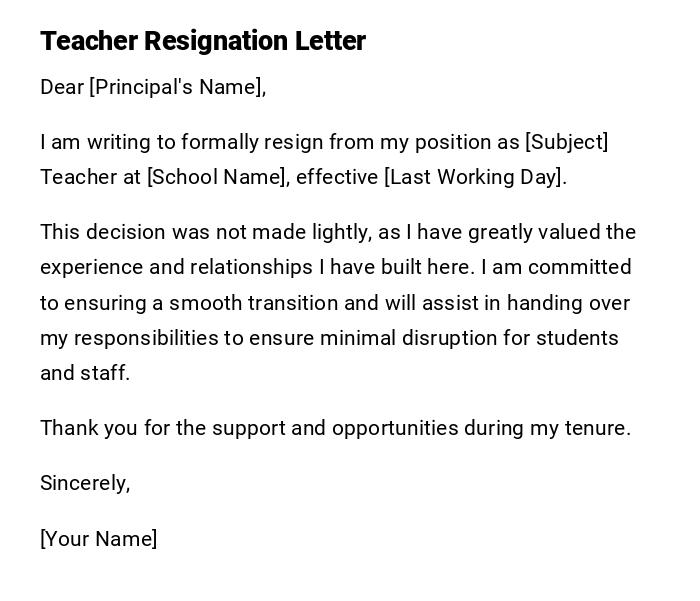
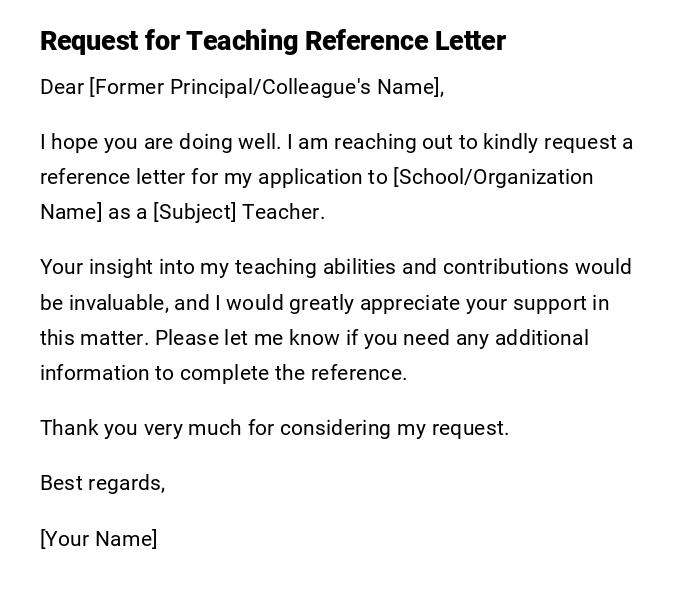
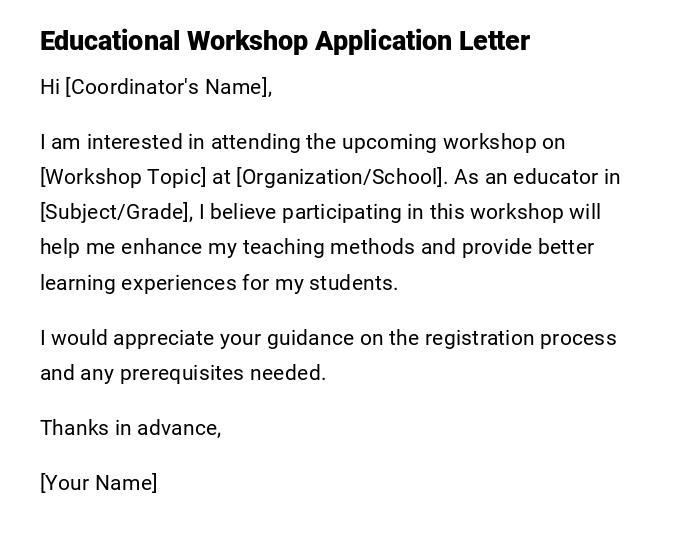

 Download Word Doc
Download Word Doc
 Download PDF
Download PDF